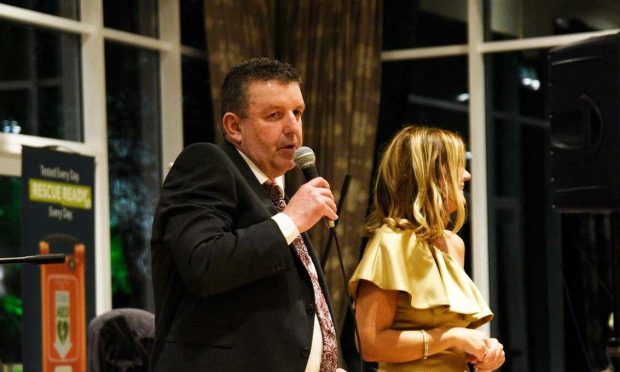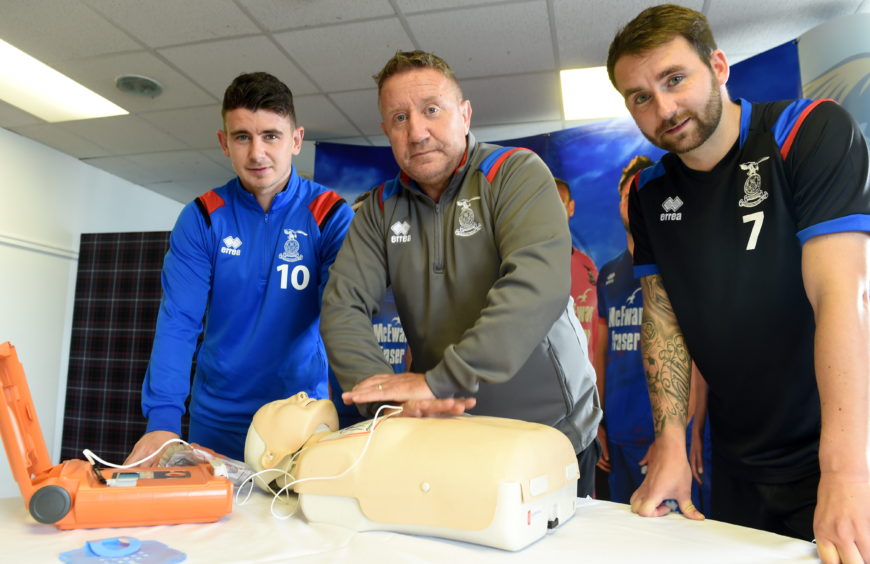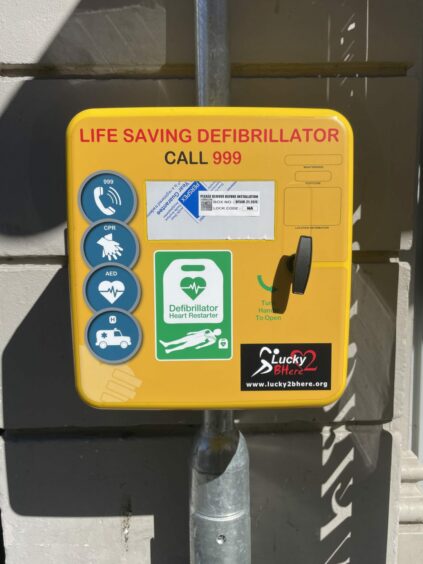The founder of charity Lucky2BHere has praised Inverness Bid for investing in five more defibrillators for the city centre, and asked other towns to consider following its lead.
The founder of the life saving charity, Ross Cowie, said that with the latest equipment in Inverness the city now had more than 100 machines.
Mr Cowie, from Portree, started the defibrillator and training charity after his own life was saved in 2007 by one of the machines.
But, he said while Inverness was fitting machines, other towns, such as Oban, were still without defibrillators in the town centre.
Of Inverness’ commitment to the machines and training in essential lifesaving skills (ELS), he said: “I think it is fab. Well done Inverness Bid. It is great to be back up and running after the pandemic and the training is on. That is five more in the city centre.”
Mr Cowie, who is a volunteer of the charity he founded, was only given six months to live after a problem with his heart.
If it hadn’t been for a passing ambulance that had a defibrillator on board, he would not be here.
So, in the time he had left, he set about getting two of the lifesaving devices fitted in his home town of Portree on Skye.
He said: “I thought I would make the best use of my time left.”
Lucky2BHere is now the biggest purchaser of defibrillators in Scotland and Northern Ireland.
How much does it cost?
Mr Cowie said: “The application for anyone wanting to fit a defibrillator is simple. You ask for it, you get it. You don’t get it without training, and in return you make a donation.”
The charity don’t ask for a specific amount of money when it comes to fitting the machines, but Mr Cowie will tell you the cost of fitting one.
The ambition is not only that there will be defibrillators throughout Scotland, but also that the communities where they are fitted are trained in essential lifesaving skills.
These skills, paired with or without the defibrillator, Mr Cowie believes will go on to save someone’s life.
He continued: “I have done a fair bit of research, and in other countries children in schools, and adults who want a driving licence need to have skills in lifesaving. We should have the same rule in Scotland.
“As well as fitting the machines, we want every child in Scotland to have had experience of what to do to save a life.
“Before the pandemic we were rolling a programme out to Highland schools, and we are about to restart the programme. We want every school to have a defibrillator and we think that Highland Council should invest in that for its schools, don’t you?
“The training, as well as the defibrillators, are saving lives. Of the 13 cardiac arrests in Lewis over the last year – two people are still alive because of the machines and training.
People are still here because of the machines
“Young folks still here because of them.”
In Portree there are 21 machines, but in places like Oban there are none. There are 100 in Inverness, and in Edinbane, which has a population of only 150, there are seven.
Mr Cowie continued: “The quicker you can get to people in cardiac arrest the quicker you can get someone back to normal afterwards.
“We are aiming for our machines to be within four minutes of people. It is important to say that while we encourage everyone to have training – you don’t need training to work the machine.”
He added: “We have one part time administrator who works at the charity. More than 90% of what we take in is spent on saving lives. People volunteer their time to do the training and to speak to groups.”



Conversation